Russia accidentally destroyed its own fishing trawler in the Baltic Sea in a shocking friendly fire incident amid botched war exercises.
The fishing boat – named Captain Lobanov – lets out smoke after coming under missile attack off the Russian enclave of Kaliningrad.
There was an apparent attempt to cover up the hugely embarrassing mistake by Vladimir Putin’s Baltic Fleet with initial reports of an unexplained “explosion and fire” on the trawler.
Three were killed and four injured in the suspected Iskander-M missile attack, with the affected sailors able to escape on a lifeboat.
A relative of one of the crew members spoke to independent Russian media outlet Dozhd about the strike.
“When the survivors were evacuated, everyone knew perfectly well that three people were dead,” the source said.
“And everyone knew perfectly well that a rocket had hit. But they decided to write that there was a “fire” on board.
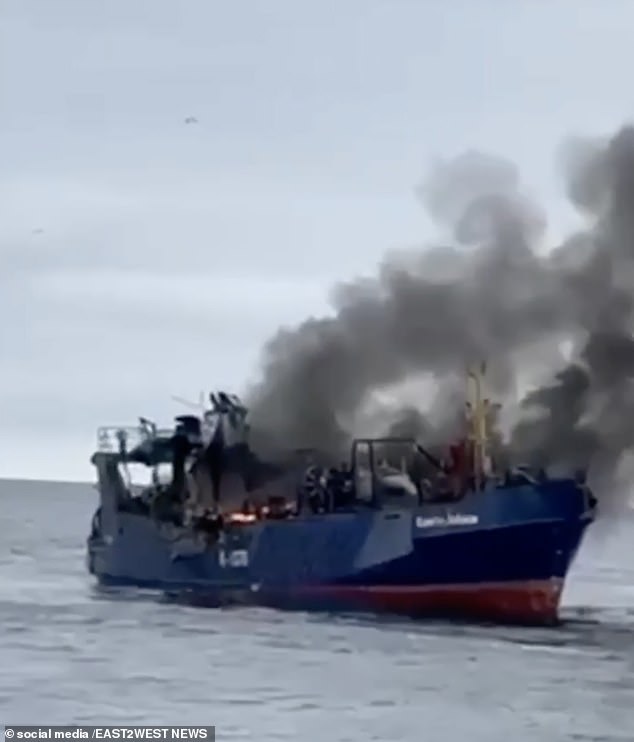
The fishing boat – named Captain Lobanov – lets out smoke after coming under missile attack off the Russian enclave of Kaliningrad.


Three were killed and four injured in the suspected Iskander-M missile attack, with the affected sailors able to escape on a lifeboat.
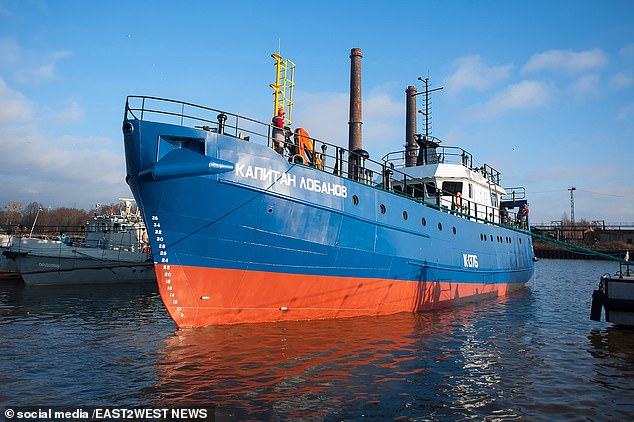

A Russian trawler named Captain Lobanov exploded in the Baltic Sea ‘due to a missile strike by Vladimir Putin’s own navy’
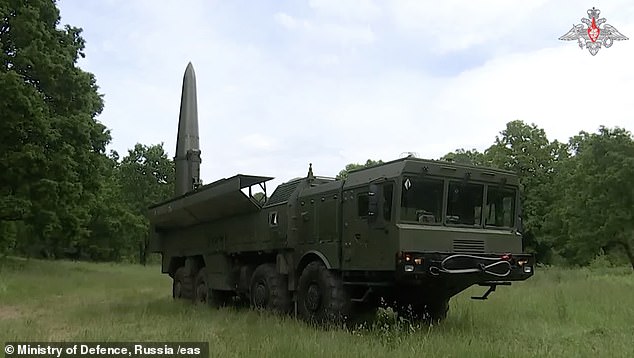

Captain Lobanov reportedly hit by Iskander-M missile
The captain’s cabin was completely destroyed in the strike, causing considerable damage to the ship.
Earlier reports suggested the ship had sunk, but the wreckage had been towed to port following Tuesday’s incident, while war exercises were underway in the Baltic.
The survivors are currently recovering in hospitals in the Kaliningrad region, although one of them is said to be in serious condition.
The injured were reportedly interrogated by FSB security officers and ordered “not to talk about the incident”.
The naval exercises involved attacking a conventional enemy, including a submarine, according to reports.
They involved the use of Iskander-M hypersonic ballistic missiles and cruise missiles.
The costly incident came as Russia punished Ukraine with a new round of air attacks this morning, in which some 90 missiles and 60 drones hit key energy infrastructure, putting the second city of Kharkiv in the dark and damaging several facilities, officials reported.
It is apparently the biggest strike of the war against Ukraine’s energy grid, with internet down and domestic and industrial electricity supplies hit across the country.
Dramatic footage shows the Dnipro hydroelectric plant – Ukraine’s largest – in flames following a strike which also hit a bus, causing several civilian casualties.
The dam, part of the hydroelectric facility that supplies electricity to the Zaporizhzhia nuclear power plant, apparently remained intact, but the turbine chamber and sluice equipment were damaged.
“The fire at the plant continues,” power company Ukrhydroenergo said. “Emergency services and energy workers are working on site, overcoming the consequences of the numerous airstrikes.”
Residents of the second city of Kharkiv suffered water and electricity cuts overnight and the city’s transport engineering plant, a vital facility that produces and repairs tanks, was also hit by some of the heaviest bombings of the war so far.
Russian Telegram channel War Gonzo called the ruling “an evening and morning judgment” – and the brutal strikes followed closely on the heels of Putin’s victory in the Russian presidential election, which he sees as a mandate to continue his invasion of Russia. ‘Ukraine.
Earlier this week, he vowed revenge for what he saw as Ukrainian strikes against civilians in Russia’s Belgorod region.
He said: “We can respond in the same way. (We can strike) civilian infrastructure and any other such objects attacked by the enemy.
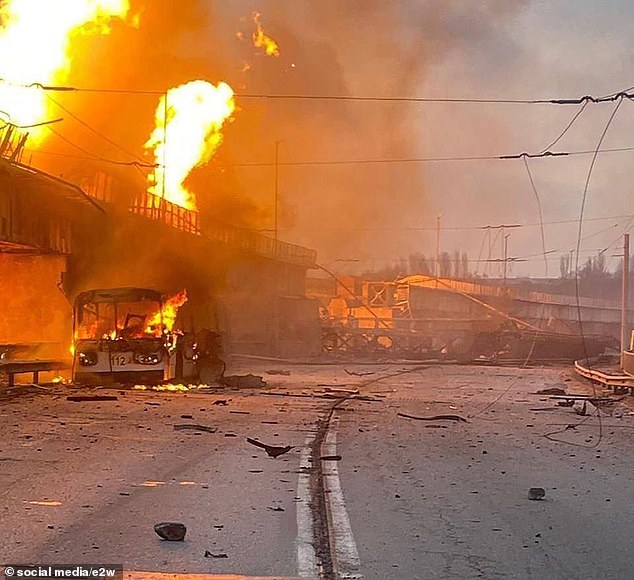

Putin’s missiles and planes hit Ukraine in the largest ever attack on its energy infrastructure.
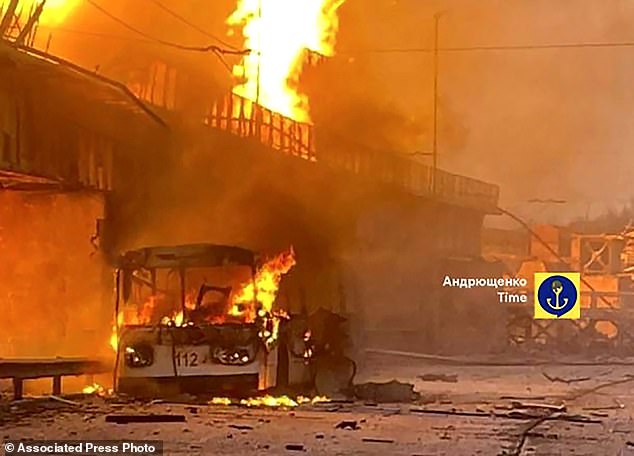

In this photo provided by Petro Andryuschenko, advisor to the head of the Mariupol city administration, a burning trolleybus is seen on the damp of a hydroelectric power station after Russian attacks in Dnipro, Ukraine, Friday, March 22 2024.
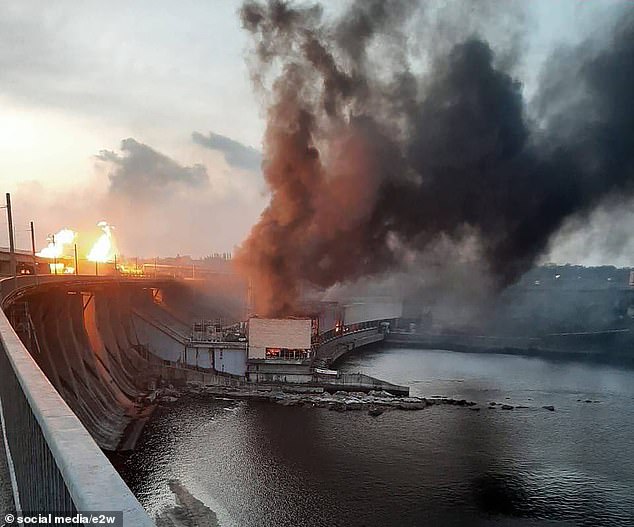

Damage to the Dnipro hydroelectric power station is shown
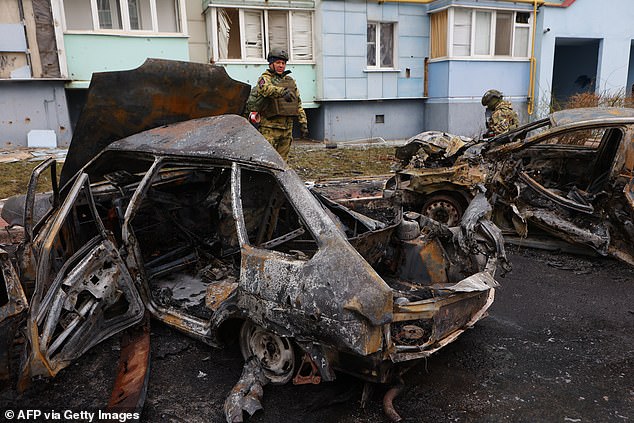

Self-defense unit volunteers near burned cars in a residential area of the city of Belgorod after new air attacks on March 22, 2024
“The world sees as clearly as possible the targets of Russian terrorists: power plants and energy supply lines, a hydroelectric dam, ordinary apartment buildings and even a trolleybus. Russia is fighting against people’s ordinary lives,” President Volodymyr Zelensky said on the messaging app Telegram on Friday.
For the second day in a row, NATO warplanes in Poland were taken off due to “long-range Russian aviation activity”, monitoring the flight path of Russian planes to ensure they did not threaten alliance territory.
Thirteen Tu-95MS aircraft – part of Putin’s nuclear arsenal but using conventional missiles – struck various targets across Ukraine.
With air defense overwhelmed by these planes and missiles, Russia also attacked with kamikaze drones.
Explosions were recorded in Kanatovo, near Kirovograd, a reserve air base of the Ukrainian Air Force, as well as in Kremenchuk, Burshtyn, Khmelnitsky Odessa, Zhytomyr and Vinnytsia.
A large local hydroelectric plant was completely out of service in Ladyzhyn, Vinnytsia region, according to Mayor Serhiy Borzov.
